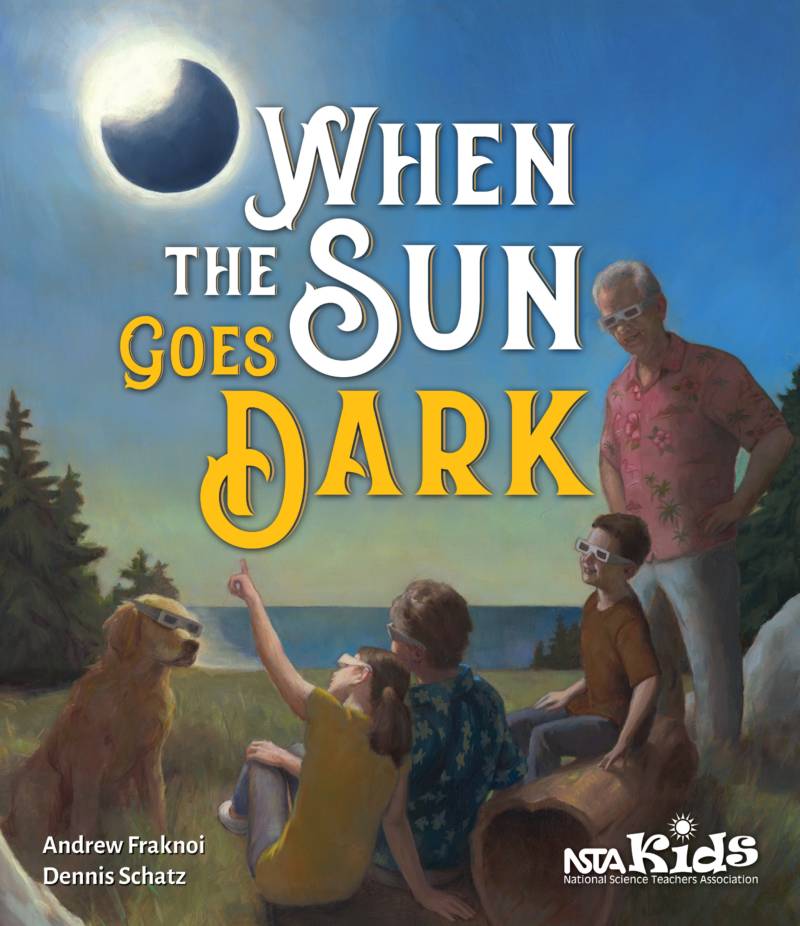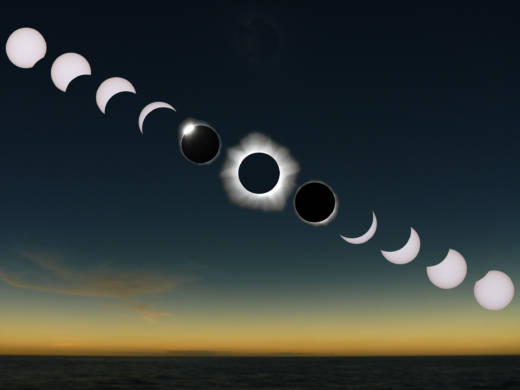If you just go into a dark living room and take the lampshade off your lamp, and hold up a tennis ball, you can essentially do the eclipse right there. The lamp is the sun, the tennis ball is the moon, and your kid’s head is the earth. You can put that tennis ball in front of the lamp, and make a shadow on their head. That shadow is the eclipse shadow we’re all going to be part of on Aug. 21.
I know a lot of Californians are hitting the road to Oregon to see the total eclipse. Should those of us staying home be disappointed we’re not going to get to see it?
This is a very democratic eclipse. Everyone in California who has clear skies will be able to see a partial eclipse, where the moon takes a big bite out of the sun. In the San Francisco Bay Area, it will be a 76 percent bite taken out of the sun. In Los Angeles, it will be a 62 percent bite, so that’s a pretty substantial bite.
People have been fascinated with eclipses for centuries. Tell us about some of the myths connected with solar eclipses.
Today, we just understand eclipses as part of the natural ballet of the solar system. But thousands of years ago, it really surprised people when there was an eclipse. People thought some monster was eating the sun. In Asia, people talked about a dragon that was eating the sun. People brought pots and pans outside and banged on them and screamed to make the monster go away. Remarkably, it always worked.
That’s still a California tradition in some places, right?
The Griffith Observatory has a long tradition of banging pots and pans during an eclipse. And because this is the first solar eclipse of the internet age, there is quite a bit of misinformation out there. Some people are worried you need to keep children and pregnant women inside because eclipse rays are danger. But there are no special rays coming from the eclipse. It’s just the moon getting in front of the sun.
Any tips for people who want to see the eclipse in California??
It will start around 9 a.m. when the moon first moves across the sun, but it will be very slow. The maximum eclipse will happen between 10-10:30 a.m. and it will be over between 11:30-12 p.m. You need to take common sense precautions just as you would anytime you’re looking up at the sun.
What if you don’t have eclipse glasses?
You can use a colander. The kind you use to wash fruit and vegetables. They’re full of holes. If you go out the morning of the eclipse with your back to the sun and hold the colander over your shoulder, it will make a shadow on the pavement. The pinholes in the colander will make a little image of the eclipse sun on the pavement for each hole. You’ll see a shadow full of eclipse suns. It looks great on the pavement and makes you the hero of your neighborhood because you can show it off to other people.
This interview has been edited for brevity and clarity.
“When the Sun Goes Dark” is available in both print and electronic editions from the National Science Teachers Association Press. The e-book can be downloaded instantly from http://nsta.org/eclipse
“First, the Sun looked like it had a little bite taken out of it… . Then that dark bite out of the sun got bigger and bigger. When the sun was almost covered, it looked like a diamond ring for a second. After that, not only the sun, but also the sky turned dark. The birds even stopped singing.”
— From “When the Sun Goes Dark”


